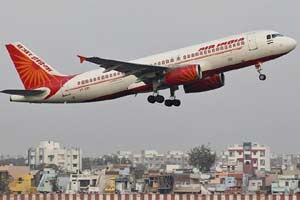Air India’s net losses could come in at a much smaller R2,636 crore for FY16 compared with losses of R5,598 crore in the previous year, senior executives at the national carrier told FE. The reduced losses are the result of a sharp drop in fuel prices, which have dropped 57.3% since June 2014.
Should fuel prices remain at these levels, it would be possible to bring down the losses to less than R2,000 crore in FY17 and allow the carrier to turn cash positive in FY17-18. That’s a good two years ahead of the timeline targeted in the turnaround plan that was approved in April 2012.
As per the turnaround plan, the government has committed for an equity infusion of Rs 30,231 crore in the carrier. Of this, Air India has already received Rs 22,280 crore so far. In Budget 2016-17, Air India was allocated another Rs 1,713 crore as part of the plan against the airline’s demand of Rs 4,300 crore.
Senior executives pointed out that the smaller fuel bill apart, the airline had become operationally more efficient. For instance, the wide-bodied aircraft utilisation improved to 13 hours per day while the same for the narrow-bodied Airbus aircraft is around 11 hours per day. Efficient handling of aircraft is allowing Air India to operate more flights on different routes without increasing the fleet size.
The airline is expected to increase its EBITDAR (earnings before interest, tax, depreciation and rentals) for the current financial year by 215% to Rs 4,526 crore compared with Rs 1,436 crore in FY15.
“We are ahead of the turnaround plan by at least two or three years. According to the turnaround plan we were supposed to turn cash positive by FY19-20 and report profit by FY21-22. Now, Air India is expected to be cash positive by FY17-18 and may report net profit by FY18,” added the official mentioned above.
In the latest board meeting of the airline, the above mentioned financial figures were approved. In FY16, Air India is on track to make an operating profit of Rs 6 crore but in FY17 it is expected to increase to Rs 530 crore. As an indication of a recovery or turnaround in the daily operations, the airline’s passenger load factor for the current fiscal year on international routes improved to 75% and the same on the domestic routes stood at 80%.
According to the senior official, this turnaround in fortunes could be achieved because of good management of human resources. In 2012 when the turnaround plan was approved, the aircraft to manpower ratio of the carrier stood at 1:295, which in 2016 improved to 1:115.
“We have hived off a lot of employees to the subsidiaries and abolished vacancies in the non-operational avenues. Our revenue per employee ratio has also improved in the last few years,” added the official.
The beleaguered national carrier has also plans to retire Rs 6,000 crore of aircraft-related loans by completing the sales and lease back of nine Boeing 787 Dreamliner aircraft. The total aircraft related debt of the airline as of now is around Rs 20,000 crore.
The sale and lease back of the nine Dreamliners will be completed on March 31 by Germany’s Deutsche Bank. While increasing operational efficiency, Air India is also planning to expand its network and recruit more than 500 pilots in the coming years. In 2016 the national carrier plans to recruit around 200-250 type rated pilots.
In order to discipline its workforce especially the pilots, Air India has also decided to recruit the new pilots on contractual basis rather than employing them as permanent ones.


